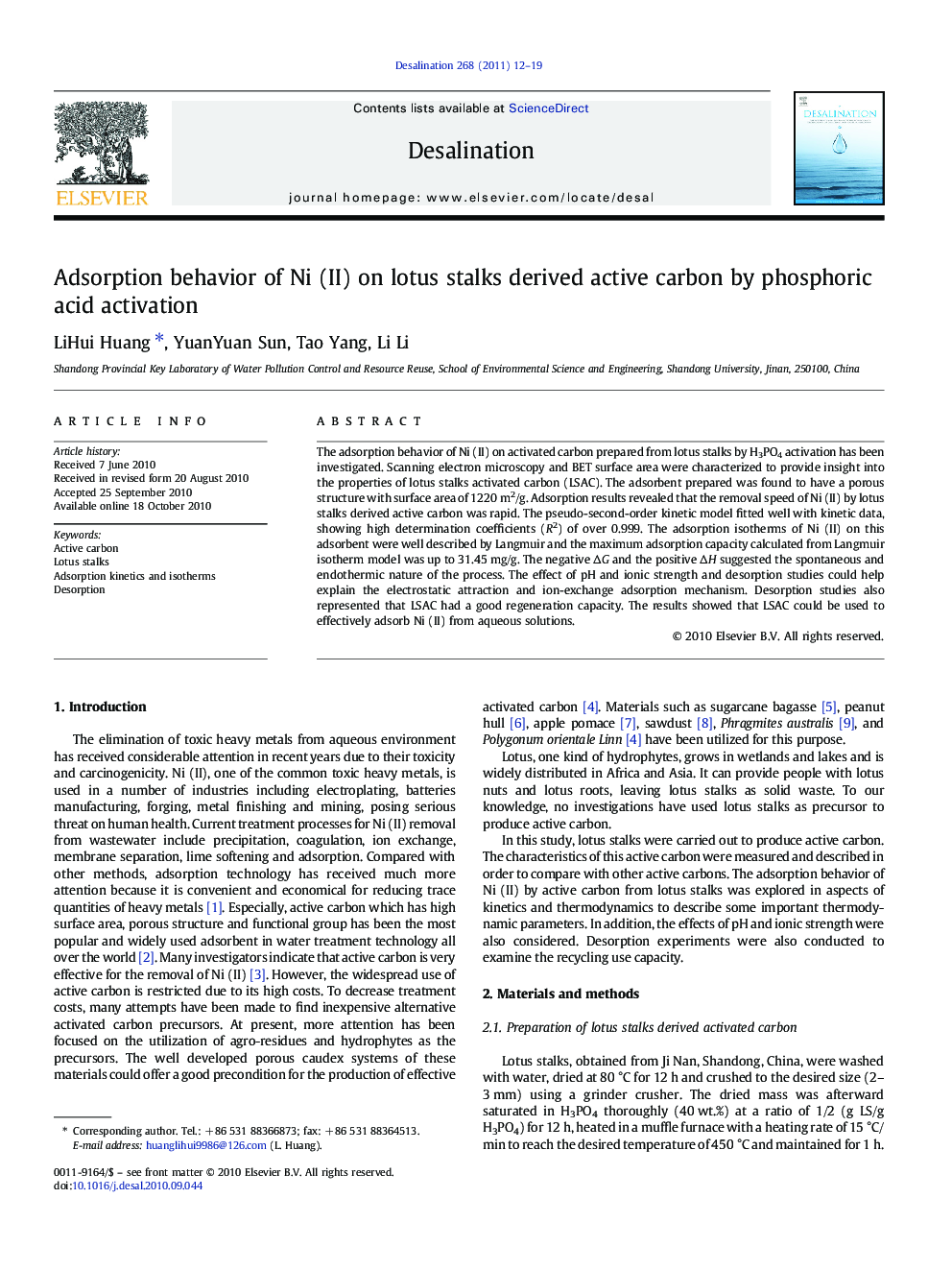| Article ID | Journal | Published Year | Pages | File Type |
|---|---|---|---|---|
| 625459 | Desalination | 2011 | 8 Pages |
The adsorption behavior of Ni (II) on activated carbon prepared from lotus stalks by H3PO4 activation has been investigated. Scanning electron microscopy and BET surface area were characterized to provide insight into the properties of lotus stalks activated carbon (LSAC). The adsorbent prepared was found to have a porous structure with surface area of 1220 m2/g. Adsorption results revealed that the removal speed of Ni (II) by lotus stalks derived active carbon was rapid. The pseudo-second-order kinetic model fitted well with kinetic data, showing high determination coefficients (R2) of over 0.999. The adsorption isotherms of Ni (II) on this adsorbent were well described by Langmuir and the maximum adsorption capacity calculated from Langmuir isotherm model was up to 31.45 mg/g. The negative ΔG and the positive ΔH suggested the spontaneous and endothermic nature of the process. The effect of pH and ionic strength and desorption studies could help explain the electrostatic attraction and ion-exchange adsorption mechanism. Desorption studies also represented that LSAC had a good regeneration capacity. The results showed that LSAC could be used to effectively adsorb Ni (II) from aqueous solutions.
